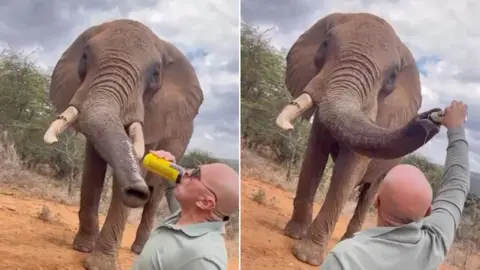In a groundbreaking initiative, scientists from the University of the Witwatersrand in South Africa have embarked on an innovative anti-poaching strategy that involves injecting rhino horns with radioactive material. This initiative, part of the Rhisotope Project, is designed to help customs officials easily identify smuggled horns as they are transported globally, without posing any health risks to the rhinos themselves.
With the largest rhino population in the world, South Africa faces a severe poaching crisis, losing hundreds of these majestic animals each year. According to Professor James Larkin, a leading figure in the project, poachers are still killing at least one rhino a day, indicating urgent action is needed to reverse this trend. After six years of dedicated research costing approximately £220,000 ($290,000), the project has successfully confirmed the safety of the radioactive material through pilot studies involving 20 rhinos.
The collaboration with the International Atomic Energy Agency has yielded promising results, revealing that the radioactive horns can be detected even within large containers, enhancing the chances of interception by law enforcement. Jamie Joseph, director of the Saving the Wild charity, praised the Rhisotope Project as an essential step towards curbing the illicit flow of rhino horns, but she emphasized the necessity of stronger legislation and political commitment for long-term solutions.
With over 400 rhinos falling victim to poaching annually since 2021, the project is pivotal in protecting this endangered species. Jessica Babich, head of the initiative, expressed a vision of scaling the technology to safeguard Africa's iconic rhinos, asserting that their survival is crucial for preserving a vital part of the continent's natural heritage.
The demand for rhino horns, particularly in Asian markets where they are sought after in traditional medicine and as status symbols, continues to pose a significant risk to rhino populations. Both white and black rhinos are facing dire circumstances, with the latter classified as critically endangered, underscoring the importance of innovative measures like the Rhisotope Project in the ongoing fight against poaching.


















